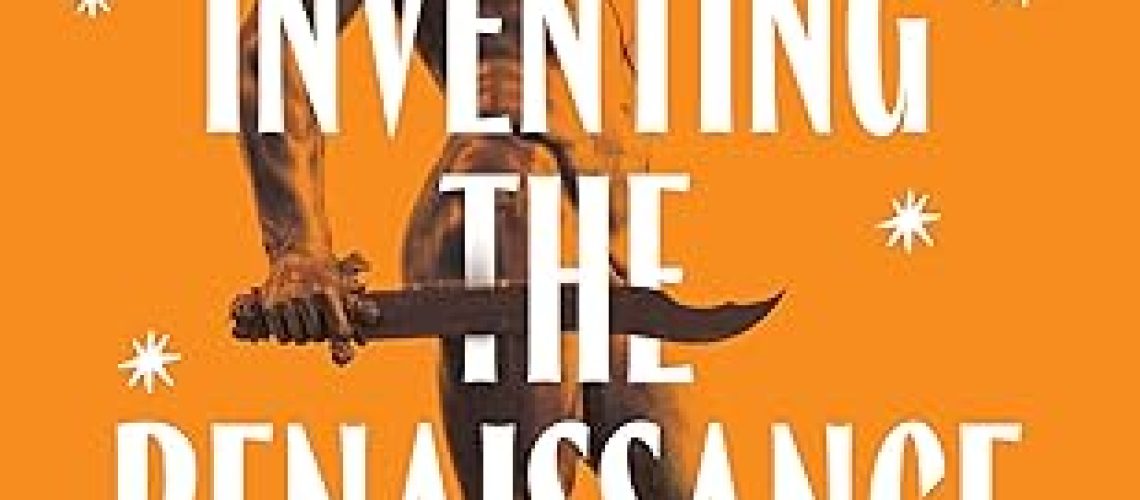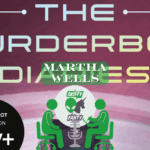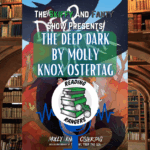Ada Palmer’s Inventing the Renaissance is a comprehensive look at an often misunderstood period of history, and what we can learn not only from it, but from our understanding (and misunderstanding) of it.
Palmer’s history of the Renaissance, Inventing the Renaissance: The Myth of a Golden Age, lays down its marker right in the title. Palmer is here not to make myths of the Renaissance but to look at it critically. She is self-aware of her own role as a historian and even warns us in the beginning not to take her own word as gospel regarding the Renaissance. She repeats this warning a few times throughout the book. Palmer is intent on you being a critical thinker and reader of what she has to say, and not to passively take it in like a sponge, but to engage with her, and the text, and realize that she has a point of view.
With that in mind, she launches into a subject that she loves, and centers the book in what many consider the heart of the Renaissance, and a city that she loves, Florence. Although the ostensible heart of the book is the biography of fifteen individuals of the Renaissance, the real biography of the book is of Renaissance-era Florence. If this book does not make you want to visit Florence, afterwards, then perhaps you don’t have the travel bug. Me, I’d already wanted to go to Florence, and this book only whetted that need and desire.
Florence, by circumstance, by luck, by skill, has more Renaissance stuff than the rest of Italy combined. The reason why a lot of Renaissance histories, including hers, focus on Florence is because that’s where the Renaissance remnants are. Palmer does bring us to other locations as side shows – Rome. Milan. Naples. Venice, the “airport hub of the Medieval Mediterranean” – but the focus of the book, inexorably and inevitably, is Renaissance Florence. Palmer does go into why at length, with a bit of regret as to what we have lost from the Renaissance.
And what we find in looking at Renaissance Florence, and the fifteen individuals she has chosen (ranging from famous ones like Michaelangelo and Machiavelli to ones you have likely never heard of, such as a woodworker who wound up making his fortune, after being humiliated by trolling on an epic scale, as a craftsman in the court of the King of Hungary), is that the Renaissance was a far more complicated, and dark and violent place than what the very name Renaissance conjures. It is indeed the myth of a Golden Age, in Palmer’s eyes.
To illustrate this, Palmer focuses on a letter sent to Machiavelli by a friend. Machiavelli is in the middle of writing a history of his own period. His friend urges Machiavelli to continue and complete the work, because he fears that future generations will not believe just how bad things are without Machiavelli’s history to explain it all. Some Golden Age, indeed. The Renaissance is brought to earth in Palmer’s vision.
But what a vision!
With those fifteen biographies, and a look at Renaissance schools of thought, and a lot of background, going all the way back to Petrarch, a father or maybe THE father of the Italian Renaissance, this is the most comprehensive book I’ve read on the Renaissance short of Will Durant. And Palmer has the advantage (as well as the caveats) of being a scholar of the Renaissance, and so she digs into primary sources that Durant, with his sweeping history and reliance on other texts, just didn’t have the capacity to do. Palmer uses records, and letters, and books to give us the intimate details. I learned a lot of things. Just one small example: You see references to ducats in Renaissance history a lot. How much is a ducat in today’s money? About a thousand dollars. So that 3000-ducat dowry is three million dollars in today’s money. I also didn’t quite realize just how expensive books were, before the advent of the printing press.
And Palmer makes it clear in her work that scholarship and history and research into history is a thing that changes, and provides opportunities to refine and reconsider previous interpretations in the light of new evidence and scholarship (and she makes it clear that she fully expects that in a century, people will point at the errors in her own work in turn). The best example Palmer uses to make this idea come home is not from the Renaissance itself, but rather from the Norse Greenland settlement. Why did it die out? I thought it was climate change (the Little Ice Age). And that was the standard model for centuries. However, recent scholarship reveals that it wasn’t the case. The Greenlanders did fish and try to live as well as they could. The current scholarship suggests the trading expeditions they depended on for a lot of supplies dried up in the wake of the Black Death, and the breaking of that trade network is what doomed the Greenlanders colony.
But in the end, this book is a commitment. It’s over 750 pages of material, and you, the prospective reader, may not want to tackle the definitive take on the Renaissance written in this generation. Given how much she blends things and makes references and ties and weaves a tapestry between all of these characters (she has a lot of fun, for instance, wherever she brings up the more martial Popes as “Battle Pope I” and “Battle Pope II”), it makes it a hard book to dip into again and again until you’ve read the entire thing first and seen the full shape of it. So yes, the book is daunting (it’s 30 hours in audio). The book is not for everyone, but it’s a first order and first water piece of scholarship at length.
And the book discusses some grim things, war, disease, plague, people being absolutely horrible to each other, and yet these people for all of their very different worldviews are recognizably human and become human through Ada’s often very funny and always incisive writing. The book is contemporary and topical. If for no other reason, she discusses the Papal Election of 1492 at length (something she runs a whole class project about). That’s the election of Alexander VI, the Borgia Pope.
But I want to go back to the length of the book and its comprehensiveness for a moment. We are in a time, a moment where the immediate slop of AI being used by college students and even college professors seems to threaten the idea and value of reading deeply. And then there are of course the small rounded rectangles in our pocket whose apps are designed to get and steal our attention. There is a real resistance in this day and age at cracking open and fully reading a book, especially a nonfiction book of this length. Anthon Kaldellis’ history of Byzantium, The New Roman Empire: A History of Byzantium is of an even more daunting size. So is this a book worth the time and effort, especially in this day and age? Are books of this size viable? I think Palmer’s Inventing the Renaissance justifies its size and then some.
And for the genre reader, this is a chonky, valuable book for showing that the past is a different country…and yet the people in it are awfully human. One can get a real appreciation for authors like Jo Graham and Guy Gavriel Kay by reading the full-on history that Palmer provides here, and this book also acts a bit as a Rosetta stone for her own space opera series. I can now better see where she is coming from in her historiographic approach in the history and worldbuilding of the Terra Ignota ‘verse.
It is unlikely I will ever re-read this tome from cover to cover again (who knows, though, since I am re-reading all of Durant at the moment) but I value it as part of my book collection, my oeuvre. This is a book, now that I have read it, I can dip into whenever I wish. Palmer’s text is eminently readable and quotable.
What books one reads and keeps says something about the reader as well as the writer, and my engagement with Palmer’s magnum opus (premature perhaps to say that, since I hope she writes for decades more to come) indicate that this is now an essential piece of that oeuvre. Again, it’s no shame if you don’t want to climb this mountain of a book. But the mountain is there, for you, should you try it. The path is long but it is not hard (not harder than reading a Kate Elliott book of similar length).
Come see and experience at length, Palmer’s view of the Renaissance. There is war, and death, and destruction…but wonders, and the intimacy of everyday life, and a view of a time period so very misunderstood and misused.
Find out more about Palmer’s work in episode 788 of the podcast, where she talks to Shaun and Trish.







